Here there are some photos of the Moon approximately two days after the full moon phase:
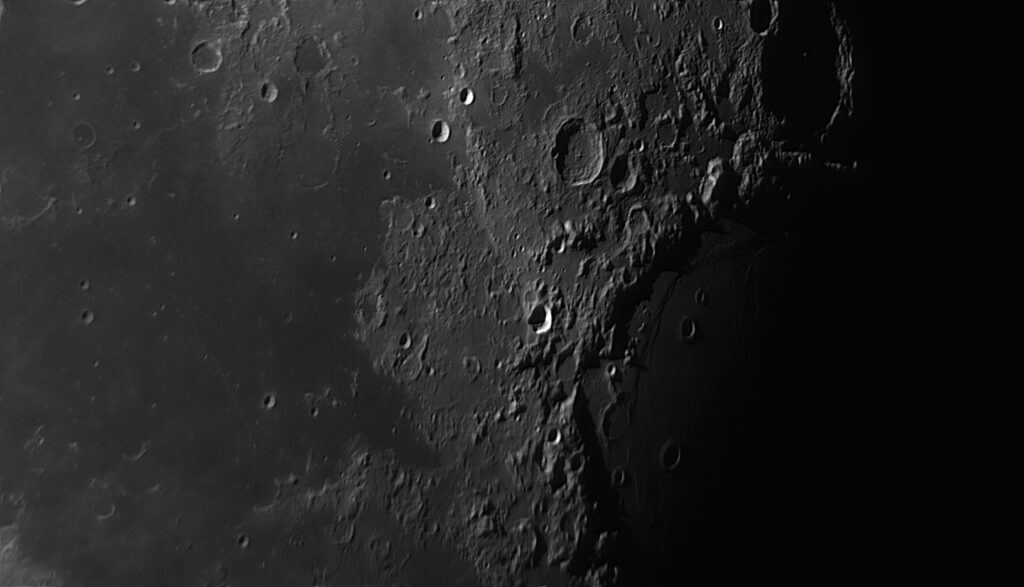
To the east (right) the Sun is setting on the Mare Crisium, and a little further north (top) you can see the perimeter of the Cleomedes crater while its interior which is 2500-3000 meters deeper is totally in shadow with the exception of the tip of the central peak still illuminated.
Towards the center of the photo you can see the Macrobius and Proclus craters which is one of the brightest points on the Moon.
The vast depression to the west is the Mare Tranquillitatis which extends north to the Sinus Amoris and south-east to the Sinus Concordiae.
In the center of the Mare Tranquillitatis the Rupes Cauchy is just visible, a deep fracture 120 km long which develops from north-west to south-east.
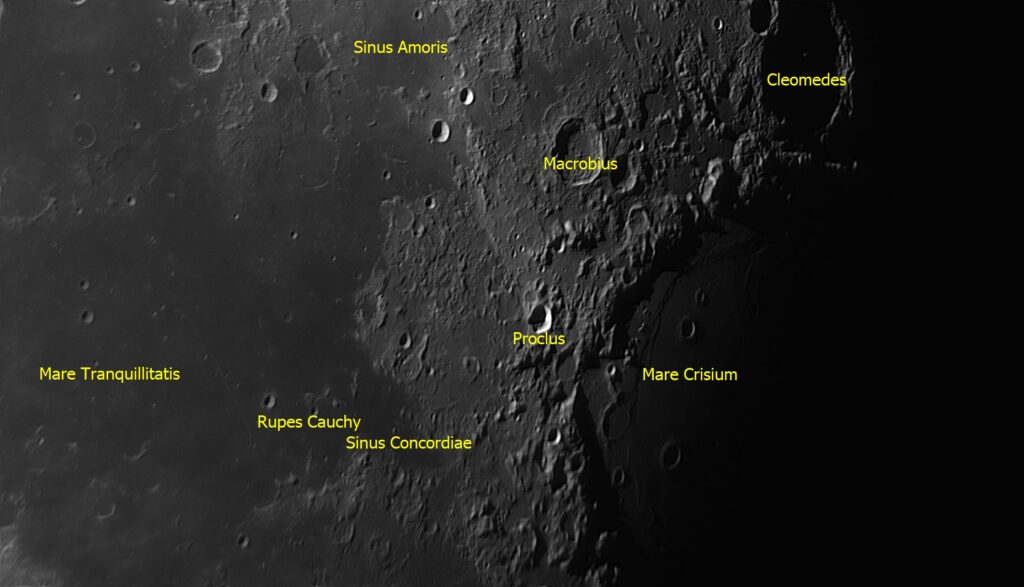
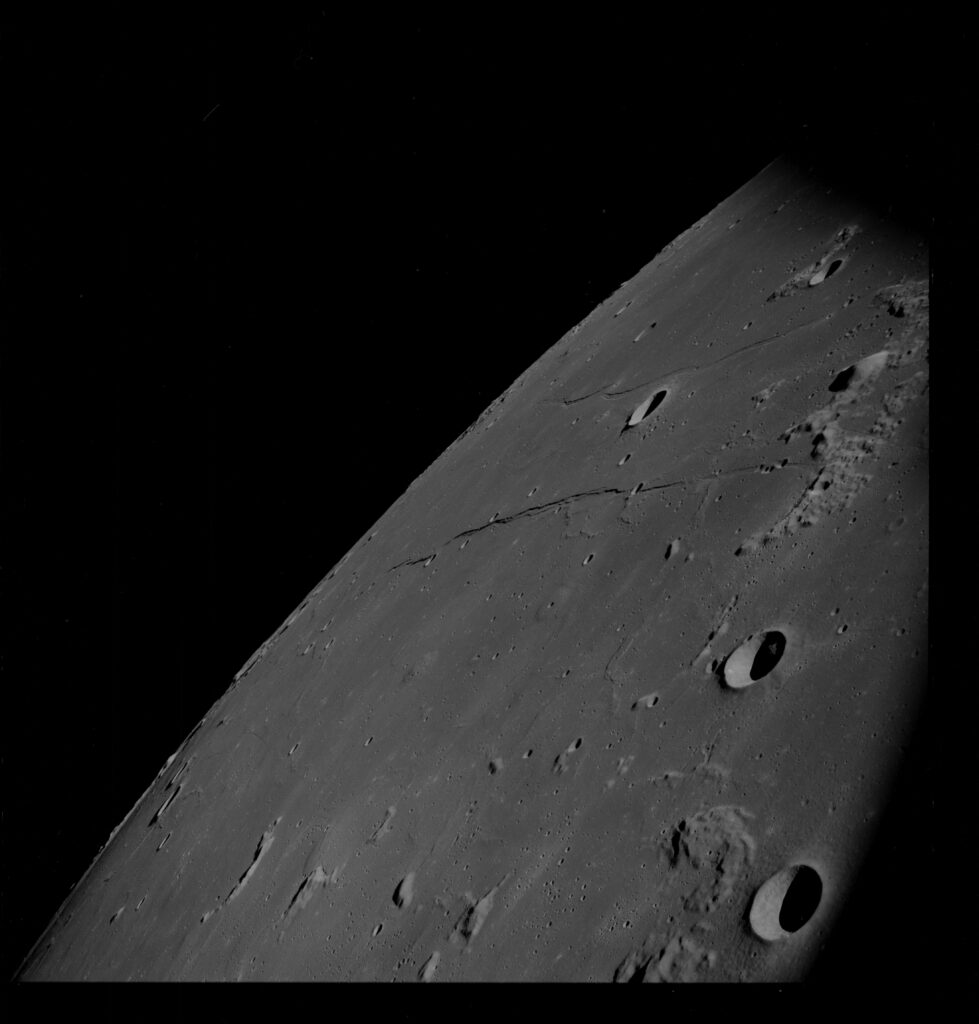
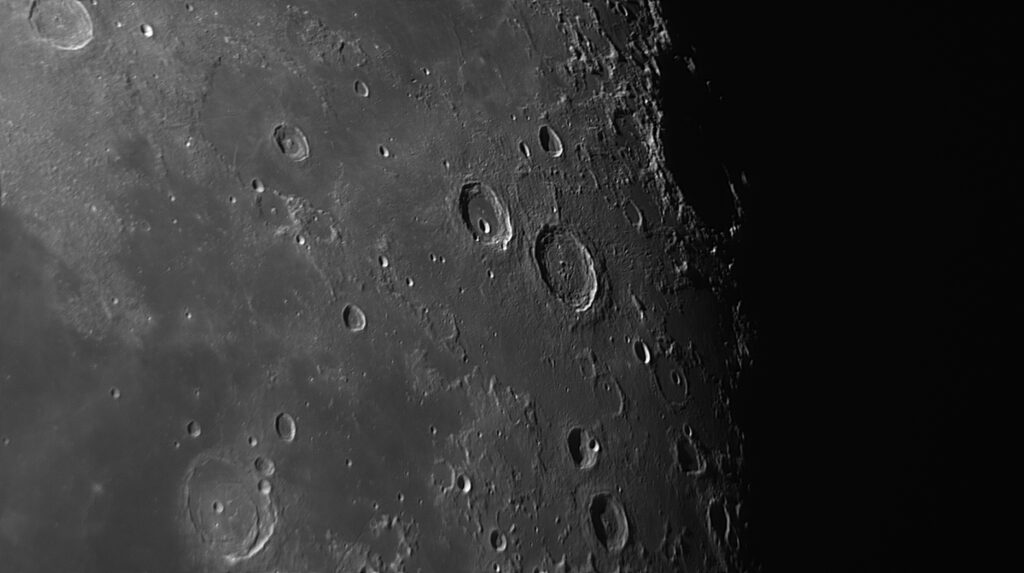
To the south-west there are the Mare Serenitatis and the Lacus Somniorum, further north the Lacus Mortis with the Burg crater in the centre, towards the west the Hercules, Atlas and Endymion craters, the last one almost completely in the shadow.
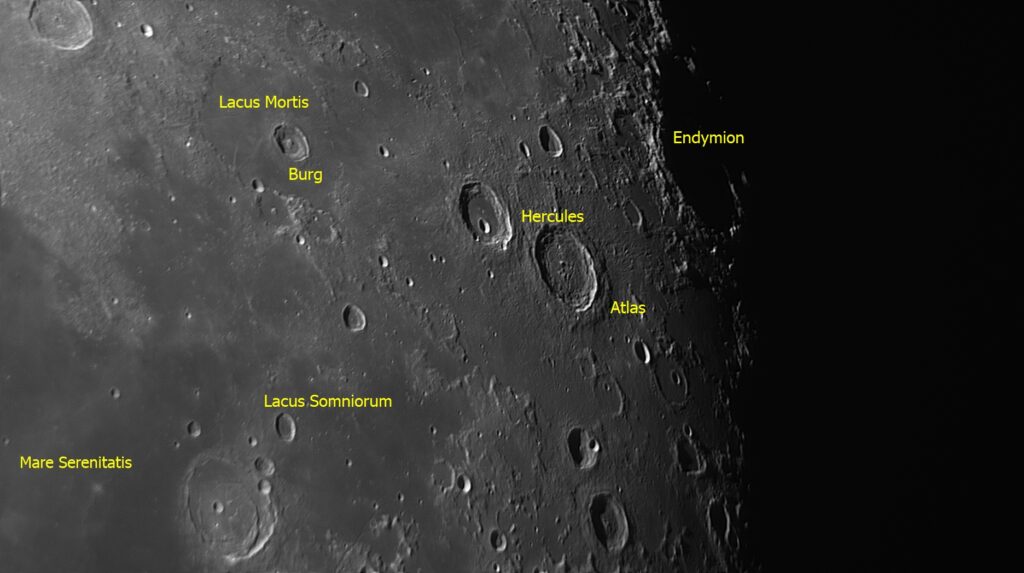
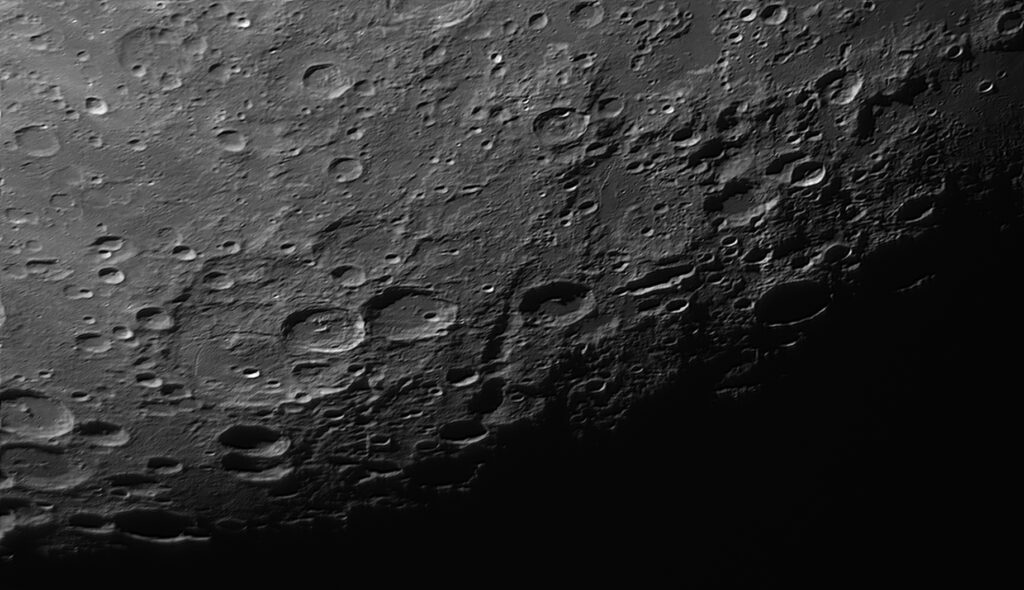
In this photo you can see the Janssen crater, 191 km in diameter, an ancient crater later covered by other craters, including Fabricius.
The Rimae Janssen is also visible inside.
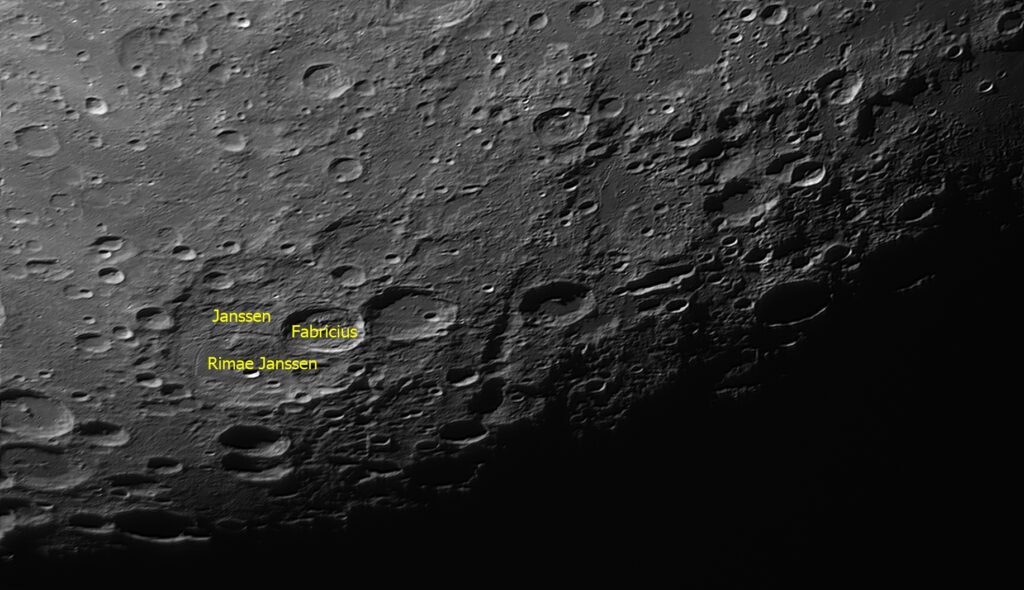

Leave a Reply